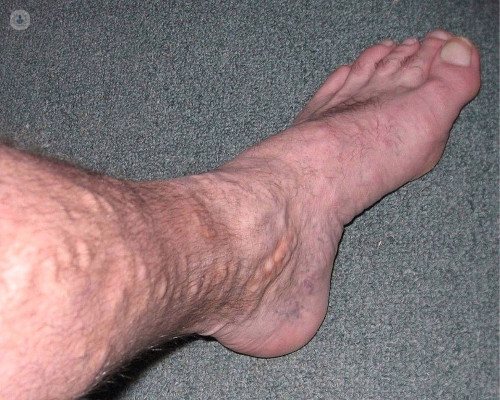

What is a bleeding varicose vein?
A bleeding varicose vein can result from the rupture of a varicose vein. This can happen either spontaneously or due to a minor skin injury. The varicose veins that will often bleed are those that are close the surface and near the ankle. In some cases, a bleeding varicose vein can become more serious, and potentially life-threatening. This would require emergency treatment.

What are the symptoms of a bleeding varicose vein?
Symptoms that the affected patient can present are: heavy legs, fatigue, edema and tingling. These symptoms are manifested more in the summer and usually appear in the lower third of the leg.
What causes a bleeding varicose vein?
A bleeding varicose vein can occur spontaneously, either due to a small trauma or by simple scratching. The varicose veins in the lower leg will often bleed more easily due to the higher blood pressure here. Over time the high pressure within these veins will stretch the walls and cause weaknesses. These veins can then rupture if the above skin layer is thin or damaged.
Can a bleeding varicose vein be prevented?
Varicose veins will often bleed spontaneously, so can be impossible to predict. However, if you are aware of your varicose veins, taking care not to damage them can help reduce the risk of them bleeding due to injury.
What is the treatment for a bleeding varicose vein?
If a varicose vein starts to bleed, you should:
- Elevate the leg so it is higher than your heart.
- Apply pressure to the site of bleeding.
- Seek medical attention if the bleeding does not stop.
Treating varicose veins in the long-run can involve sclerotherapy, wearing compression stockings, or surgical removal of the varicose veins.
